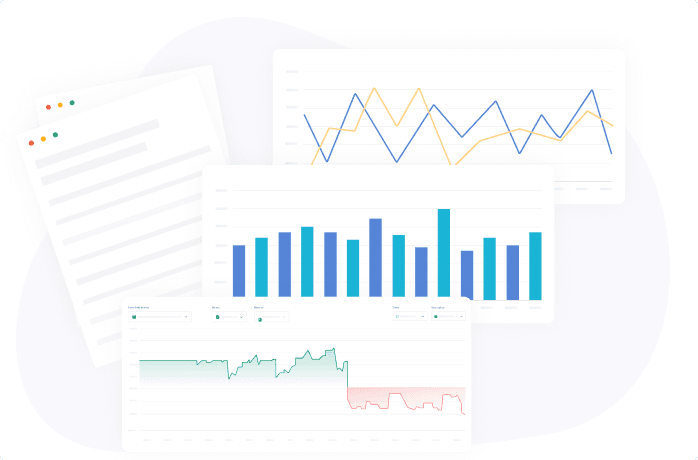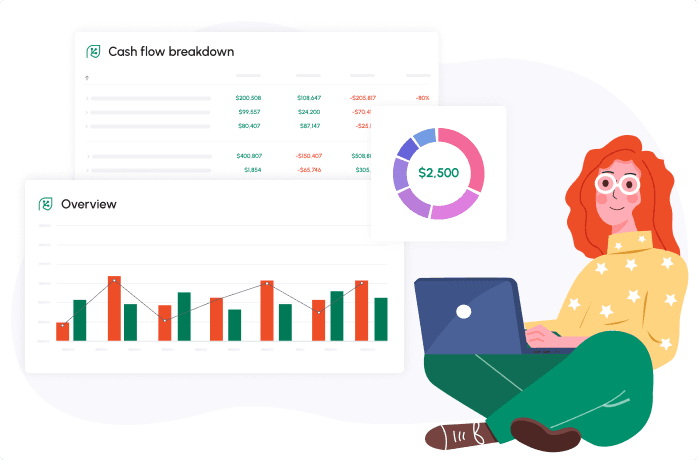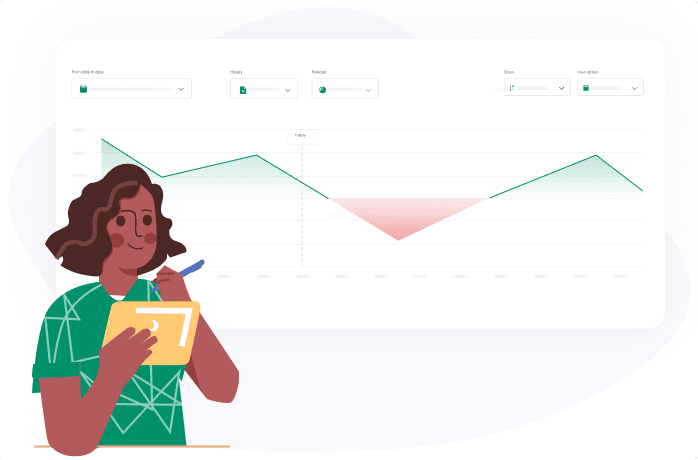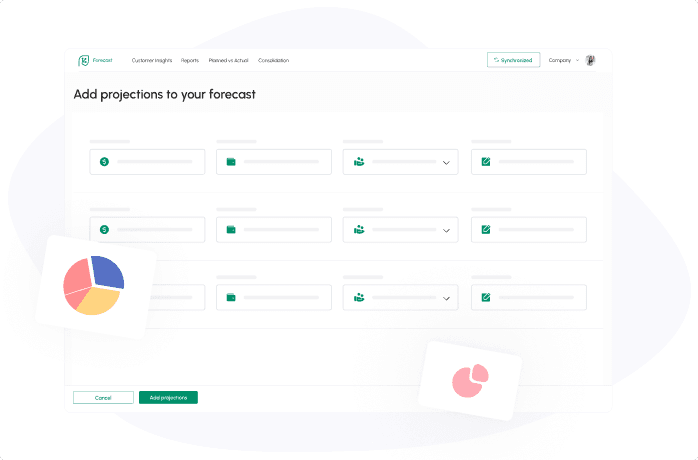
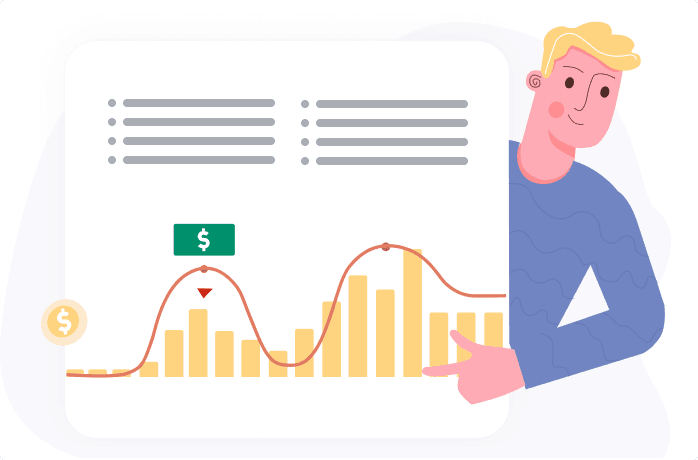
Small business financing – or the lack of it – leads to 29% of businesses failing. If you’re not implementing effective strategies to improve your cash flow, you’re at risk of being added to these stats.
Before discussing strategies to optimize your inflows, let’s look at:
- What cash flow management is
- Analyzing cash flow statements
Understanding Cash Flow Management
Businesses manage cash flow in numerous ways, such as:
- Strategically paying debts
- Timing invoice payments
- Obtaining financing
- Cutting staff
Cash flow management is simply a way to strategically shape your free cash flow so that you can pay overhead and employees and keep your operation running smoothly.
Management requires you to do the following for your cash inflows and outflows:
- Plan
- Track
- Control
If you want to remain solvent or maximize cash that you may have that is not earmarked yet, you need strong cash flow management.
One crucial aspect to consider is how to use technologies for cash flow management. Leveraging tools such as automated invoicing systems, financial forecasting software, and digital payment platforms can significantly streamline the process. These technologies not only save time but also enhance accuracy, reduce the risk of human error, and provide real-time insights into your financial health.
Additionally, cash flow software for small businesses can offer specialized solutions tailored to the unique needs of smaller enterprises, ensuring more effective management of financial resources.
Analyzing Cash Flow Statements
Cash businesses have it easy because they don’t worry about late invoice payments impacting their operations. A staggering 94% of manual invoices are paid 30 – 60 days after being sent. If you ship products or sell services, this means that you have potential earnings in limbo.
You need to learn to analyze your cash flow statements to understand:
- Where money is coming in and going out
- Cash flow from operations
- Cash flow from investing
- Cash flow from financing
Learning how to read free cash flow and net sales data will help you understand your company’s current financial position.
Strategies for Optimizing Cash Inflows
Optimizing cash inflows is one of the smartest choices for your business. You can increase cash flows and optimize them by:
- Taking on short-term debt rather than making large, upfront capital expenditures
- Offering your clients and customers a discount for paying invoices early
- Automating invoice sending and reminders
- Implementing strict inventory management systems to reduce taking in too much inventory
- Increasing pricing if it still fits into the ideal customer budget
Small business financing may also be an option. Many companies need to take out loans or lines of credit to maintain healthy cash flow.
However, be very cautious of taking on too much debt, especially if interest rates are unfavorable.
Techniques for Managing Cash Outflows
Small business cash flow has two parts: inflows and outflows. If you only learn how to manage cash flow with increasing inflows, you’ll end up insolvent. Instead, you should follow LEAN practices to reduce waste and improve your operations.
You can better manage your outflows by incorporating the following techniques:
- Delay payments but always avoid penalties and fees
- Negotiate bulk discounts with suppliers
- Lower your number of employees
- Negotiate longer payment terms
- Leverage trade credit
- Analyze expenses and eliminate any that are unnecessary
You can also restructure debt to be better in your favor. Forecasting should be part of your management process, too.
Cash Flow Forecasting and Budgeting
If you want to improve cash flow, you can do two main things:
- Forecast your cash flow so that you can make key operational changes to grow your company and potentially secure financing when necessary.
- Budget so that you can better keep track of your cash outflows, which will have a direct impact on free cash flow. To increase a manufacturing business cash flow, budgeting should also include monitoring inventory levels and streamlining production processes to reduce excess costs.
Cash flow for small business is one of the most important financial metrics that you can monitor. If you have high free cash flow, it will be easier to grow your operations and stay away from debt.
Working Capital Management
The working capital management strategy is all about monitoring and maximizing your business’s assets and liabilities to ensure your business is operating efficiently.
This strategy involves the careful management of:
- Accounts receivable
- Accounts payable
- Cash
- Inventory
The goal is to ensure that the business maintains sufficient cash flow by using its resources efficiently.
Financing Options for Cash Flow Improvement
One simple and quick way to improve your cash flow is through small business financing. Financing will infuse your business with the cash you need to expand or stay afloat.
Businesses have a few options for borrowing cash:
- Small business loans
- Lines of credit
- Credit cards
- Invoice factoring
Financing can be useful, but it’s important to consider this option carefully to avoid taking on too much debt.
Avoiding Cash Flow Pitfalls
Small business cash flow management is both an art and a science. One of the key reasons why small businesses fail is due to poor cash flow management, making it essential to avoid common pitfalls that drain resources. Avoiding the pitfalls below will help you stay on the right track:
Trim Unnecessary Expenses
One of the most effective ways to avoid cash flow pitfalls is to reduce unnecessary expenses. If you’re spending more than you’re generating, you’re going to run out of cash fast.
Some expenses are absolutely necessary, such as utility bills. But if there are expenses that aren’t crucial to the operation of your business, then consider:
- Negotiating more favorable terms, OR
- Eliminating the expense entirely
Reducing your expenses will free up cash immediately and help improve your cash flow over the long term.
Track Incoming Payments
Another big cash flow pitfall is having too many outstanding invoices. If clients or customers aren’t making payments on time or your team is dragging its feet when sending out invoices, it’s time to make changes.
Here are some tips:
- Start using automated accounting systems to send out invoices right away.
- Set up automated payment reminders for overdue invoices
- Encourage clients to pay on time by putting your payment terms in writing on the invoice
Many businesses offer incentives for early or on-time payments.
Use Credit Smartly
A line of credit or loan can be useful if you’re scaling up or just need an infusion of cash. However, it’s important to make sure that you can repay the debt before you even think about applying.
Use your credit smartly. For example, you may take out a short-term loan while waiting for a reliable client to make a large payment.
In this case, you’re using your credit wisely because you know the debt will be repaid once the client makes their payment.
Engage in Cash Flow Forecasting
Many of the cash flow pitfalls you’ll come across can be avoided simply by engaging in cash flow forecasting.
Forecasting will give you some insight into your future cash positions, so you can take steps to avoid a shortage or reinvest if a surplus is headed your way.
Conclusion
Learning to manage and improve cash flow is crucial if you want your business to achieve sustainable growth over the long term. Use the tips above to ensure that your business’s cash flow continues to stay in positive territory.
Related posts:
You may be interested:
New:



